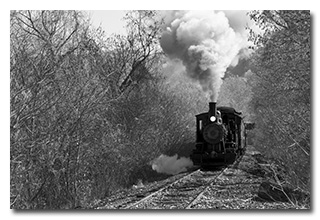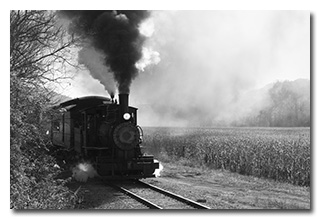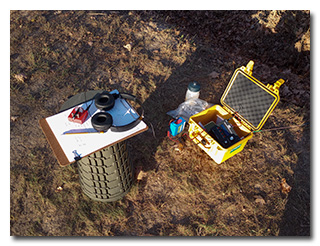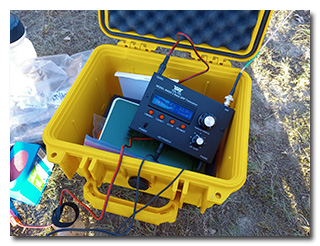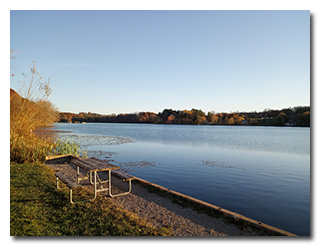
by William Eric McFadden
From the park's website:
-
Lake Logan is located in Hocking County in southeastern Ohio. This territory once belonged to the Wyandot Native Americans, who had a large village known as Oldtown on the Hocking River, located one mile north of Logan. Logan was established by Thomas Worthington in 1816 and named after the Mingo Chief, James John Logan.
The Hocking River provided sufficient water power for the operation of grist and sawmills, particularly at the falls above Logan. The town of Logan was slow to progress until the opening of the Hocking Canal, a branch of the Ohio-Erie Canal, in 1838. Several industries prospered due to the rich mineral resources of the Hocking Valley. The discovery of immense quantities of coal gave rise to a flourishing mining industry. Towns appeared and vanished as quickly as mines opened and closed.
It was soon found that iron ore could be extracted from the sandstone bedrock of the area. During the Civil War, Ohio’s iron industry reached its peak as the leading producer of iron for implements and weapons. No less than 46 furnaces were firing in Ohio’s six-county Hanging Rock Iron Region.
The clay soils of the Hocking Valley helped Ohio become a leader in clay products. The valley’s firebrick industry manufactured clay tile, building and paving bricks, and clay sewer pipe. Evidence of the industry can be seen in the many brick houses and abandoned kilns of the area. Clay is still an important commodity in the region.
Lake Logan was developed in 1955 for recreational purposes. The area was administered by the ODNR Division of Wildlife until 1964, when jurisdiction was transferred to the Division of Parks and Recreation. Originally known as Hocking Lake, the park was renamed Lake Logan to reflect the Native American heritage of the area and to avoid confusion with nearby Hocking Hills State Park and Forest.
Pictures
Description
On Saturday, November 2, 2024, one member of the Southeast Ohio Radio Adventure Team performed a successful impromptu activation of Lake Logan State Park (US-1969) in Ohio as part of the Parks on the Air (POTA; link) program.
Eric McFadden, WD8RIF, and his wife Vickie, started their day with a late-morning steam-chase on the Hocking Valley Scenic Railroad (link).
Following the steam-chase, lunch in Logan, and an afternoon spent shopping for Christmas decorations and doing other errands in Lancaster, the pair stopped at Lake Logan State Park so that Eric could perform the impromptu activation of the park and to field-test the R4020 Mini Travel Kit he had built around a recently-acquired Ten-Tec R4020 20m/40m CW transceiver and an LNR EF-10/20/40 Mark II QRP end-fed wire antenna.
Upon arriving at Lake Logan State Park, Eric looked at several locations and chose to perform his operation at the picnic shelter area. Eric deployed the LNR end-fed wire antenna as a sloper with the feedpoint near the ground and the end supported at the top of his 31' Jackite telescoping fiberglass pole held upright in a drive-on base, and he fed the antenna with a 20' ABR Industries RG-316 choke-equipped feedline assembly. Having not brought a folding camp-chair, and with no picnic tables located at the right spot, Eric operated on an Adventuridge telescoping camp-stool that is always in the car, and he was on the air at 2100 UTC.
Eric had previously tested both the R4020 and the LNR 10/20/40m antenna at home, and had verified that the radio operated properly and that the antenna provided a good SWR match on 10, 20, and 40m, but this was to be his first field operation with either the transceiver or the antenna.
Eric had planned to hold the small R4020 transceiver on his lap, atop his clipboard, but the weight of the antenna and feedline kept trying to pull the radio to the ground. Fortunately, Eric found that his headphone and key cables were long enough that he was able to place the R4020 inside the station's Pelican 1300 case on the ground at his side, where it remained stable while he performed his operation.
As at Eric's previous activations of this park, he had good cell-signal and would be able to spot himself on POTA Spots (link) and to use POTA Spots to identify possible park-to-park (P2P) QSO opportunities.
Because he hoped to be able to work his buddy Mike, K8RAT, in north-central Ohio, Eric began his operation on 40m. After finding himself a clear frequency to run, Eric began calling "CQ POTA", making the calls manually because the R4020 lacks a useful CW keyer memory, and self-spotted himself on POTA Spots. His first QSO came at 2101 UTC with KN4YTA in North Carolina. QSOs came surprisingly quickly, with Eric's fourteenth QSO coming at 2119 UTC with KE4JT in North Carolina. This run on 40m included a QSO with Eric's buddy K8RAT, a P2P QSO with K8HU at Cavalier Wildlife Management Area (US-3976) in Virginia, and QSOs with operators located in North Carolina (4), Michigan, Illinois, Ohio (3), Delaware, Virginia, Indiana, Maine, and New Jersey.
Needing to test the station on 20m but not wanting to start a long run on that band, Eric chose to hunt P2P QSOs on 20m. At 2123 UTC he completed a P2P QSO on 20m with W4LOO at Savannas Preserve State Park (US-3654) in Florida, and at 2126 UTC he completed a P2P QSO with AE1MV at Point Au Roche State Park (US-2123) in New York.
In all, Eric made sixteen QSOs, with three P2P QSOs, in about twenty-six minutes of on-air time. All of Eric's QSOs were CW and were made with five watts output.
Eric was quite pleased with the performance of both the Ten-Tec R4020 transceiver and the LNR antenna and plans to keep the R4020 Travel Kit in his car for use during impromptu operations.
Eric also submitted his log to the World Wide Flora and Fauna in Amateur Radio (WWFF; link) program.
(return)
